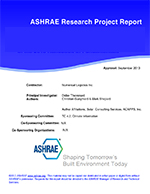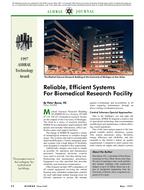Life-cycle cost optimisation of residential cooling equipment requires a knowledge of annual cooling energy requirement. Accurate methods for calculating cooling energy requirements, using computer simulation, are available, but they require hourly weather data, which are not available at many locations. This problem could be solved by interpolation between the nearest sites with available hourly weather data. The BLAST computer program was used to calculate annual sensible cooling loads for three houses at 34 sites in the northeastern United States with hourly weather data. Then, 24 of the 34 sites were used to evaluate the accuracy of various prediction methods, including distance weighting factors and linear and nonlinear interpolation. The other 10 sites were needed for interpolation at sites near the boundaries of the region considered. The better interpolation methods tested allow the analyst to predict residential cooling energy requirements at a site for which weather data are not available, without introducing significant error.
KEYWORDS: cooling load, energy consumption, housing, service life, costs, optimisation, accuracy, computer programs, weather, calculating, USA
Citation: Symposium, ASHRAE Trans. 1994, Vol.100, Part 2
Product Details
- Published:
- 1994
- File Size:
- 1 file , 900 KB
- Product Code(s):
- D-17554


